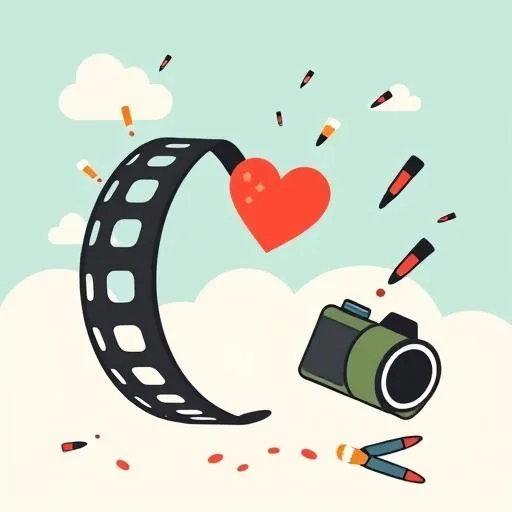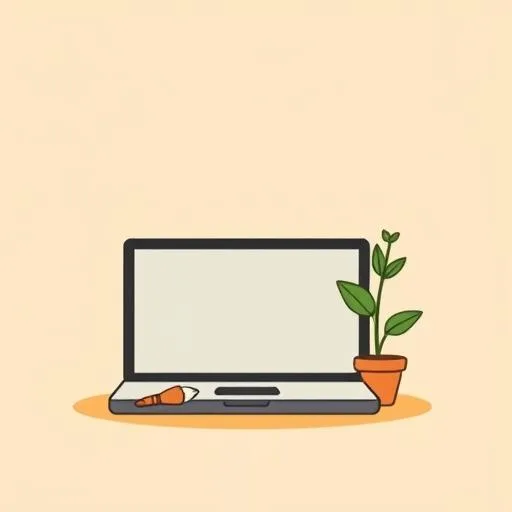
Imagine a masterpiece, forever incomplete—a story cut short, a vision left unfinished. That’s the haunting legacy of Orson Welles’ The Magnificent Ambersons, a film that lost 43 minutes to studio cuts decades ago. Now, an Amazon-backed startup wants to use AI to “finish” it. But as a dad watching my little one explore her own creative sparks, I can’t help but wonder: can technology ever replace the human touch in art? And what does this mean for the world our kids are growing up in?
The Dream and the Dilemma: AI’s Bold Promise

Picture this: AI diving into a creative puzzle that’s puzzled film buffs for decades! Showrunner, the startup behind this ambitious project, plans to blend AI with traditional filmmaking to recreate those lost scenes. They’ll shoot new footage with actors and use AI to map the faces and poses of the original cast—like digital magic stitching together history. Can you believe it? CEO Edward Saatchi actually says this isn’t about making money—it’s about answering a question that’s haunted film fans for 80 years: “Might this have been the best film ever made?”
But hold on. The Orson Welles estate isn’t thrilled. They call it “disappointing” and an “attempt to generate publicity,” stressing that AI can’t replicate Welles’ creative genius. And they’ve got a point. AI might sharpen resolution or color, but can it capture the soul of an artist? It’s like trying to recreate a child’s drawing with perfect lines but missing the heart behind those crayon strokes. Just yesterday, my daughter was chattering about her latest crayon masterpiece—it wasn’t perfect, but it was bursting with imagination pure and simple!
As parents, we see this tension everywhere—tech enhancing life but sometimes overshadowing the human element. It’s a balancing act we navigate daily, from screen time limits to encouraging hands-on play. It reminds me of how my family blends traditional values with modern tech—finding joy in both the old and the new.
Why This Matters for Our Kids’ Creative Journeys

Think about it: our children are growing up in a world where AI can generate stories, art, even entire films. It’s thrilling! But it also raises big questions about authenticity and creativity. Isn’t it amazing how AI can bring old films back to life? Still, there’s a deeper concern—research suggests AI might improve technical quality, but it risks altering historical meaning and undermining artistic intent. One study notes the challenge: finding that balance between progress and preserving integrity.
For our kids, this isn’t just about old movies—it’s about their own creative expression. When my daughter spends an afternoon building fantastical worlds with blocks or scribbling wild, colorful stories, I see pure, unfiltered imagination. AI tools might one day help her amplify those ideas, but they can’t replace the joy of creating something uniquely hers. The key? Teaching them to use tech as a tool, not a crutch—to enhance, not erase, their innate curiosity.
And hey, why not turn this into a family chat? Over a snack (maybe some fresh fruit—it’s a clear-skied day perfect for picnics!), ask your kids: “If you could use AI to finish something you started, what would it be?” Their answers might surprise you!
The Bigger Picture: Ethics, Empathy, and Future-Proof Skills

This Orson Welles saga isn’t just a film buff’s debate—it’s a mirror to broader ethical questions AI brings into our homes. How do we honor history while embracing innovation? How do we ensure tech serves humanity, not the other way around? Don’t you just wonder what world our kids will create when they learn to balance tech tools with their own unique voices? These are values we want to instill in our kids: compassion, critical thinking, and respect for creativity.
Studies highlight emerging concerns like authorship and labor displacement in the film industry, but the core issue resonates everywhere. As parents, we’re guiding the next generation to navigate these complexities with empathy and integrity. It’s about fostering skills no algorithm can replicate: resilience, emotional intelligence, and the courage to think differently.
Imagine a future where our kids use AI to solve global challenges but never lose sight of the human stories behind the data. That’s the hope—a blend of tech and heart, where innovation amplifies our humanity instead of dimming it. It’s like the blend of traditional Korean storytelling with modern digital tools our kids use today.
Practical Takeaways: Nurturing Creativity in a Tech-World

So, what can we do today? First, keep the conversation going. Talk about projects like this AI film restoration—what feels exciting, what feels off? Encourage kids to critique tech’s role in art and life. Second, prioritize hands-on creativity. Balance screen time with real-world exploration: outdoor adventures, art projects, storytelling without devices. Finally, model mindful tech use. Show them how to leverage tools for learning and fun while valuing authentic connections.
Remember, AI is a part of their world, but it doesn’t have to define it. By fostering curiosity and critical thinking, we’re helping them grow into resilient, creative adults ready to shape the future—with or without algorithms.
As the sun sets on another day, I’m left reflecting: maybe the true masterpiece isn’t a perfectly restored film but the messy, beautiful, human journey of raising kids who dream boldly and create fearlessly. And that’s a story no AI can ever write.
Source: Amazon Startup Announces Plans to Finish Orson Welles’ Lost Film With 43 Minutes of AI-Generated Footage, Futurism, 2025/09/06
